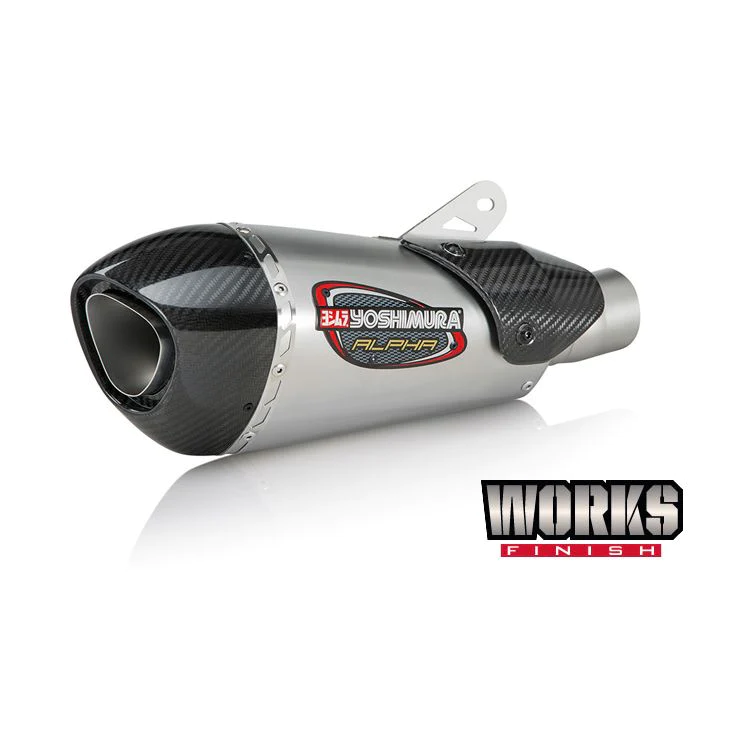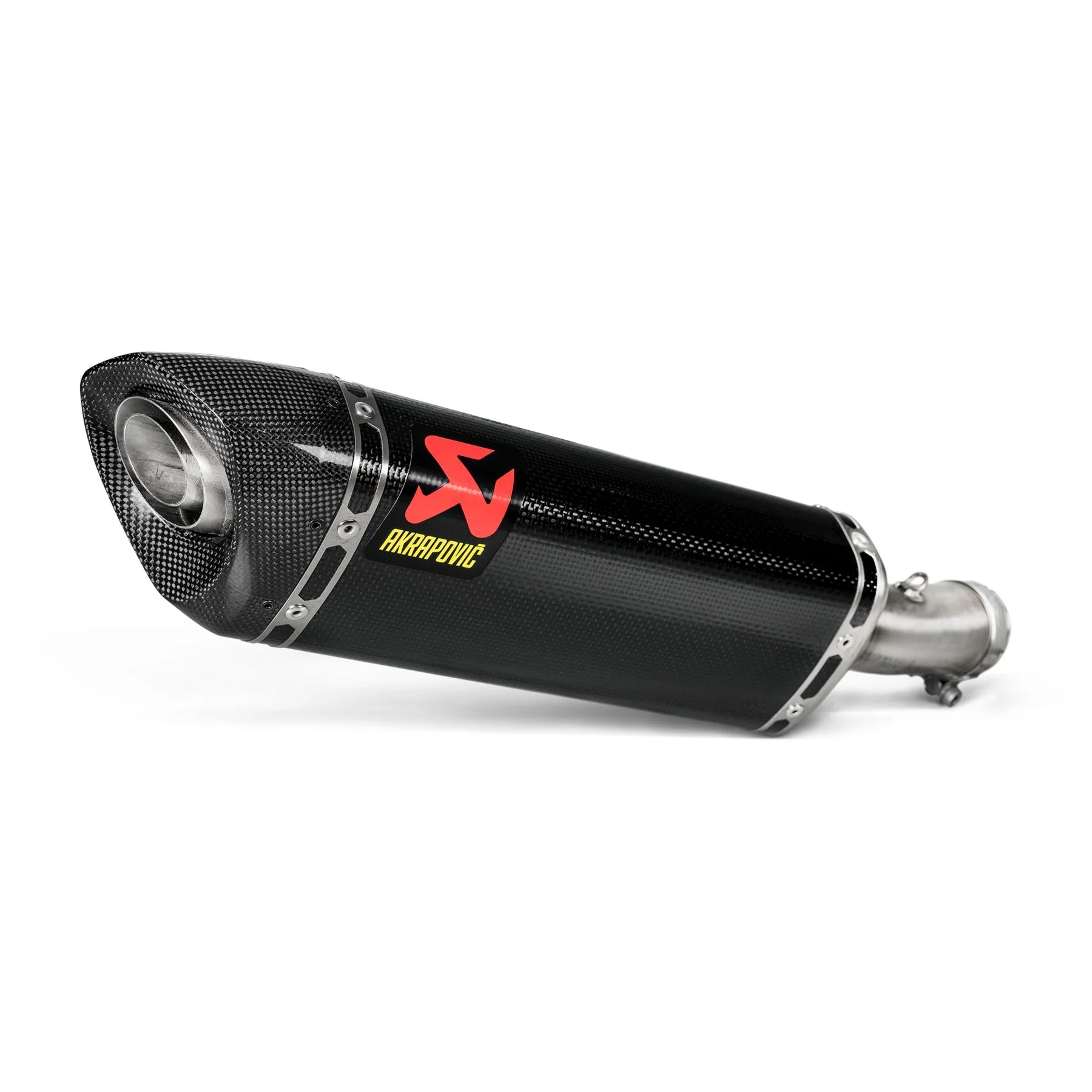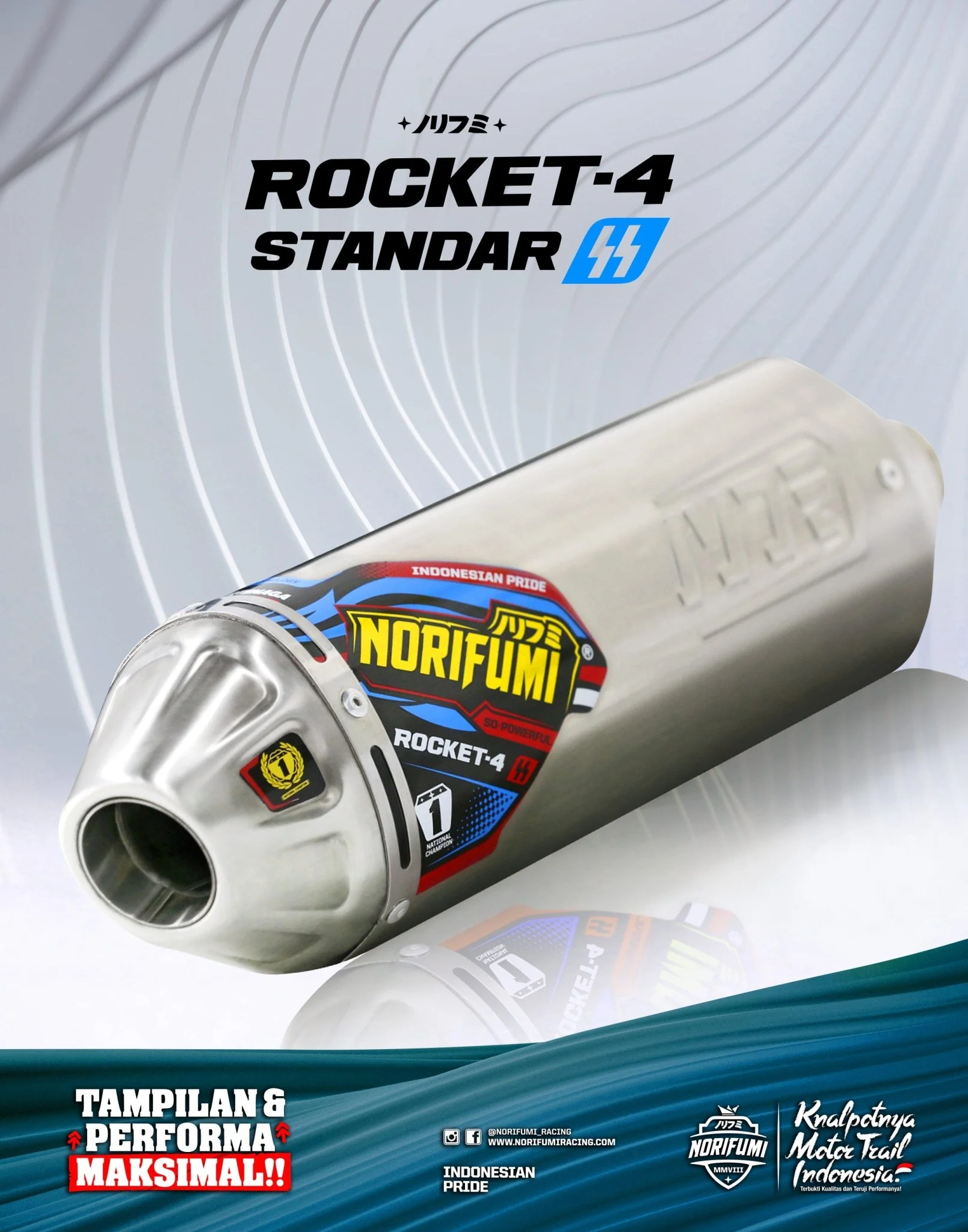Full System exhaust vs. Slip-On Exhaust Systems: Choosing the Right Sound and Performance for Your Motorcycle

Akrapovic full system for inline 4.
Which motorcycle exhaust system is best exhaust system? Full exhaust system or Slip-on exhaust system?
Exhaust systems are not only vital components of a motorcycle’s functionality but also key contributors to its overall performance and sound. When it comes to upgrading or replacing your bike’s exhaust system, you’re often faced with the decision between a full system or a slip-on exhaust. Both options have their pros and cons, and understanding the differences between them can help you make an informed decision that aligns with your riding style, performance goals, and budget.

Mivv full system for inline 4.
Full System Exhausts:
A full system exhaust consists of all components from the engine headers to the muffler(s), replacing the entire stock exhaust setup. These systems are designed to optimize airflow and performance throughout the entire exhaust tract, offering significant improvements in power, torque, and overall engine efficiency. Here are some key advantages of opting for a full system exhaust:
1. Performance Gains: By replacing the restrictive stock exhaust components with high-flow headers, mid-pipes, and mufflers, full system exhausts can unlock the full potential of your motorcycle’s engine. This leads to noticeable increases in horsepower and torque across the RPM range, enhancing acceleration, throttle response, and overall performance.
2. Weight Reduction: Full system exhausts are often lighter than stock setups, thanks to the use of lightweight materials such as titanium, carbon fiber, or stainless steel. The reduction in weight improves the bike’s handling and maneuverability, making it more responsive and agile, especially in corners and during spirited riding.
3. Sound Enhancement: One of the most appealing aspects of full system exhausts is the deep, aggressive exhaust note they produce. The combination of optimized exhaust flow and aftermarket mufflers results in a louder, more distinctive sound that adds to the overall riding experience. Riders seeking a throaty exhaust note and increased presence on the road often prefer full system setups for their auditory appeal.
4. Customization Options: Full system exhausts offer greater flexibility for customization, allowing riders to choose specific components such as headers, mid-pipes, and mufflers to tailor the exhaust system to their preferences. This level of customization extends to aesthetics as well, with various finishes and designs available to match the bike’s style.
Despite these advantages, full system exhausts come with some drawbacks, including:
1. Higher Cost: Full system exhausts are typically more expensive than slip-on alternatives due to the inclusion of additional components and higher manufacturing costs. The initial investment can be substantial, especially for premium brands or models with advanced features.
2. Installation Complexity: Installing a full system exhaust often requires more time, expertise, and specialized tools compared to slip-on installations. Proper installation is crucial for optimal performance and reliability, and inexperienced riders may need professional assistance to ensure proper fitment and functionality.
3. Legal Considerations: Some full system exhausts may not comply with local noise regulations or emissions standards, potentially leading to legal issues or fines. Riders should research and confirm the legality of aftermarket exhaust modifications in their area before making a purchase to avoid any compliance issues.

Akrapovic full system for single cylinder.
Slip-On Exhaust Systems:
Slip-on exhausts, also known as muffler replacements, are aftermarket exhaust components that replace the stock muffler(s) while retaining the original headers and mid-pipes. These systems offer a more straightforward and cost-effective way to upgrade your motorcycle’s exhaust, with several advantages and considerations:
1. Affordability: Slip-on exhausts are generally more budget-friendly than full system setups, making them an attractive option for riders looking to enhance their bike’s sound and appearance without breaking the bank. The lower cost allows for easier entry into aftermarket exhaust upgrades, providing a noticeable improvement in sound and aesthetics with minimal investment.
2. Easy Installation: One of the main benefits of slip-on exhausts is their ease of installation. Unlike full system replacements, slip-ons can be installed with basic hand tools and minimal mechanical expertise, making them a popular choice for DIY enthusiasts. Most slip-on exhausts are designed to bolt directly onto the stock mounting points, eliminating the need for extensive modifications or adjustments.
3. Sound and Aesthetics: While slip-on exhausts may not offer the same level of performance gains as full system setups, they can still provide an enhanced exhaust note and visual appeal. Many aftermarket slip-ons feature larger diameter mufflers, premium materials, and stylish designs that complement the bike’s aesthetics and personal taste. Riders can choose from a variety of sound profiles, ranging from subtle and deep to aggressive and loud, depending on their preferences.
4. Compatibility and Versatility: Slip-on exhausts are often designed to be compatible with a wide range of motorcycle models, making them a versatile option for riders with different makes and models. Additionally, some slip-on systems are modular, allowing riders to upgrade or replace individual components such as baffles or end caps to fine-tune the sound and performance characteristics.
Despite their advantages, slip-on exhausts have some limitations and considerations:
1. Limited Performance Improvements: While slip-on exhausts can enhance sound and aesthetics, they typically offer modest performance gains compared to full system setups. Since the stock headers and mid-pipes remain unchanged, the improvements in horsepower and torque are less significant, making slip-ons better suited for riders prioritizing sound and appearance over raw performance.
2. Weight Savings: While slip-on exhausts may contribute to a slight reduction in weight compared to stock mufflers, the overall weight savings are less substantial than with full system replacements. Riders seeking significant weight reduction and performance enhancements may find full system exhausts more appealing in this regard.
3. Regulatory Compliance: Like full system exhausts, slip-on mufflers may not comply with local noise regulations or emissions standards, depending on their design and sound levels. Riders should verify the legality of aftermarket slip-on exhausts in their area to avoid potential legal issues or citations.
Conclusion:
Choosing between a full system and slip-on exhaust system ultimately depends on your priorities, preferences, and budget. Full system exhausts offer superior performance gains, weight reduction, and customization options, making them ideal for riders seeking maximum performance and sound enhancement. However, they come with a higher cost, installation complexity, and potential legal considerations. Slip-on exhausts provide a more affordable and user-friendly option for improving sound and aesthetics, with easier installation and versatility across various motorcycle models. While they offer more modest performance gains and weight savings compared to full systems, slip-ons remain a popular choice for riders looking to enhance their riding experience without breaking the bank. Ultimately, whether you opt for a full system or slip-on exhaust, both options can transform your motorcycle’s sound and performance, adding a personalized touch to your riding adventures.





